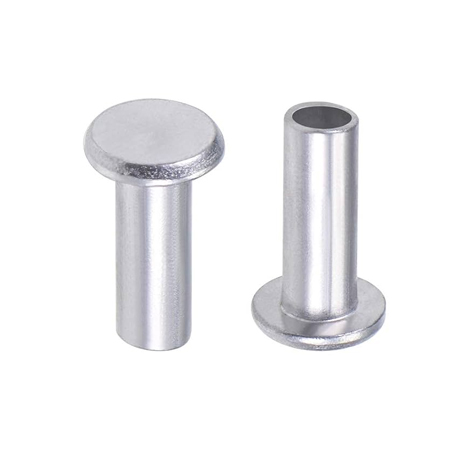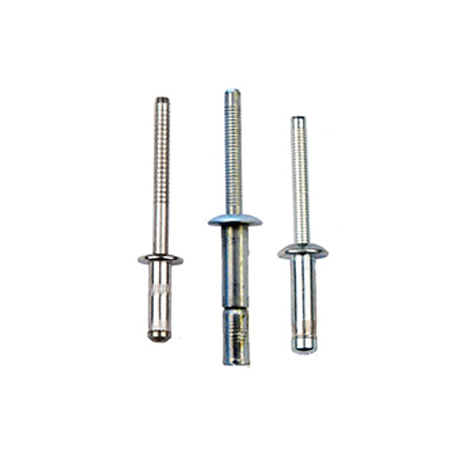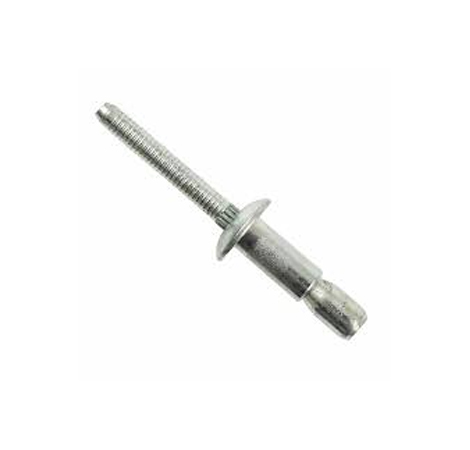A rivet is a mechanical fastener that is permanent. A rivet is made up of a smooth, cylindrical shaft with a head on one end that is ready to be inserted. The tail is the end on the other side of the head. When the rivet is installed, it is inserted into a hole that has been punched or drilled, and the tail is bucked, or upset, so that it expands to around 1.5 times the diameter of the original shaft, securing the rivet in place. Put another way, pounding flattens the "tail" material, creating a new "head" on the opposite end, giving the rivet a shape resembling a dumbbell. The deformed end of the rivet is referred to as the shop head or buck-tail, and the original head is known as the factory head.
An installed rivet can handle tension loads, or loads parallel to the shaft's axis, because each end of the rivet has a head. However, shear loads, or loads perpendicular to the shaft's axis, are far more easily supported by the rivet. For applications involving tension, bolts and screws are more appropriate.



